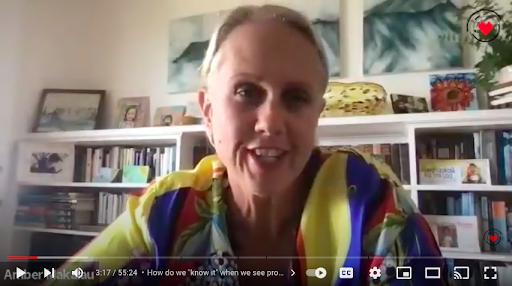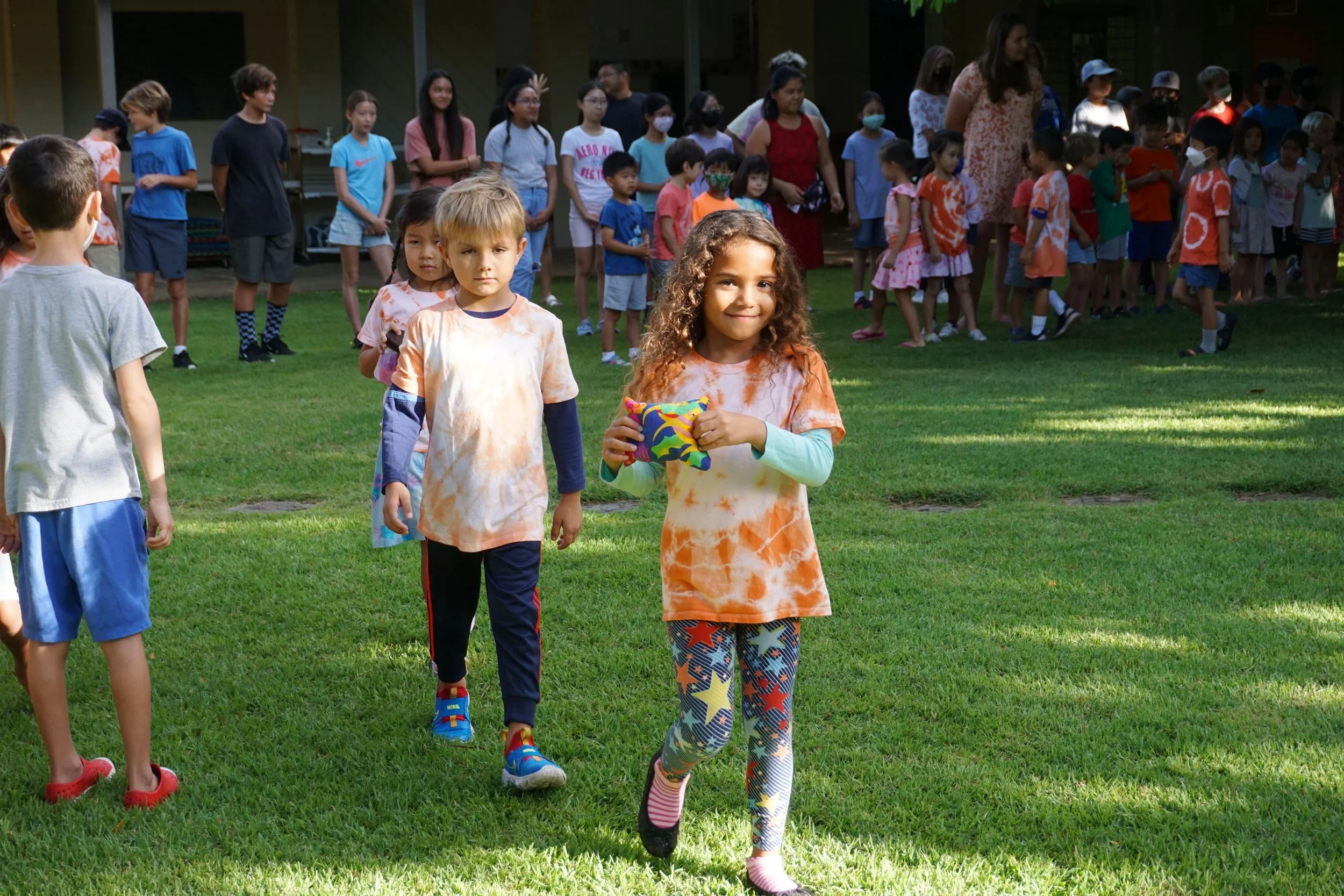By Amber Strong Makaiau
Human Restoration Project’s online Conference to Restore Humanity!
On July 25, 2022 I had the opportunity to participate in a Modern Progressive Education Panel Discussion, a component of Human Restoration Project’s first ever Conference to Restore Humanity! The conference was an international invitation for K-12 and college educators to center the needs of students and educators toward a praxis of social justice. It featured Dr. Henry Giroux, Dr. Denisha Jones, and tracks on disrupting discriminatory linguistics, ending carceral pedagogy, building for neurodiversity, and promoting childism. The purpose of the conference was to help change systems and reimagine education.
The panel was organized by Human Restoration Project’s Chris McNutt and included Josh Reppun (an ambassador for WhatSchoolCouldBe.org), Brendan McCarthy (a scholar-in-residence in the University of Hawaiʻi at Mānoa Progressive Philosophy and Pedagogy graduate program) and myself. We shared our thoughts, wonderings and strategies for making sense of and enacting progressive education in the current movement. View a complete recording of our discussion online here.
One of the stimulating questions we discussed that remains on my mind today relates to the phrase, “I know it when I see it”, made famous by Supreme Court Justice Potter Stewart. Chris made the observation that when it comes to progressive education, sometimes folks don’t actually know it when they see it. I was prompted to provide examples where, if one were to come into the teaching and learning spaces I am personally connected to, one would “know it” pretty quickly. In my unique 3-part role as a member of the University of Hawai‘i College of Education faculty, Director of Curriculum and Research at the Uehiro Academy for Philosophy and Ethics in Education, and Director of the Professional Development Center at Hanahau‘oli School, I have the opportunity to work with educators on a wide continuum of interest in and experience with progressive education. This includes teacher candidates pursuing undergraduate and graduate degrees at the University, established educators in our public schools who serve as Philosophy for Children teachers, and self-identified progressive educators at Hanahau‘oli School, Hawai‘i’s oldest progressive elementary school. In each of these spaces I see progressive education on display in wonderful ways.
TEACHER CANDIDATES
B.S. candidate Gracie Webb facilitates learning student-driven exploration in her student teaching role
With University of Hawai‘i at Mānoa College of Education teacher candidates, I often observe what Bruce and Eryman (2015) refer to as a “progressive impulse” (p.1) in education. In their coursework and field observations, they are doing a lot of reflection and soul searching about the types of teachers they want to be. What I’ve seen over the years is that philosophically, most teacher candidates express wanting to:
Build strong and caring communities in their classrooms
Attend to the whole child
Connect school life with home life
Build off of students’ interests and engage them in inquiry
Be flexible in their curricular decisions
Honor student choice
Integrate the arts
Design opportunities for students to learn by doing both at school and in the community
Offer opportunities for play and deep thinking
To me this begins to describe a progressive philosophy of education. These aspiring educators don’t necessarily use the term “progressive education” when talking about the type of teacher they want to be, but most of their descriptors align with a progressive philosophy and pedagogy. Some of the teacher candidates are able to translate their beliefs into classroom practice; some do not. But my striking observation is that most teacher candidates start out wanting to be a progressive educator.
PHILOSOPHY FOR CHILDREN TEACHERS
Emily Fox shares how she incorporates P4C in her Sunset Beach Elementary classrooms with colleagues
I also have the opportunity to work with teachers who practice Philosophy for Children (P4C) in our local schools. Many of these teachers work at more traditional schools where the curriculum is prescribed, textbooks and workbooks are valued resources, and there is a strong emphasis on ensuring students acquire the content knowledge needed for high stakes exams. I mention this because when I observe the overall school structure and system they are working in, it is not that progressive. However, when I walk into their classrooms I see:
Students and teachers seated in a circle together
Evidence of time spent building an intellectually safe classroom community of inquiry
Students and teachers generating questions they genuinely wonder about and want to think about with the group
All members of the classroom community expressing a voice and democratic vote
Students facilitating the discussions
The use of listening skills, empathy, and the tools of good thinking to engage in inquiry (not debate)
Self-assessment of progress (as individuals and as a community)
Goal-setting for future learning as they plan forward
This is a beautiful example of a progressive pedagogy, and what progressive education can look like in more traditional school settings.
Kindergarteners share their creations from the Collaborative Studio, an open workspace for student driven inquiry and invention, at the all-school morning Flag gathering
HANAHAU‘OLI SCHOOL
When I walk through the central courtyard of Hanahau’oli School, I’m surrounded by a progressive education by design, schoolwide. It is recognizable in the school’s philosophy, the teachers’ pedagogy, and in the overall structure of the school’s curriculum, daily rituals, organization and systems. Some examples include a spiraling eight-year curriculum that focuses around three main questions: Who am I? How does the world work? And where and how do I fit in that world? Thematic units of study are designed by the teachers and take into account the unique group of students and families that make up their classes each year. Parents and community are curriculum, and real world experiences are integrated into the units as well as reading, writing, math, art, music, shop, physical education, library, Hawaiian language and culture, and Mandarin. The classrooms are multiage and the teachers team teach, to better reflect the way humans collaborate in real world settings. Every child and every adult knows one another because of structures like a schoolwide morning flag and Friday assembly, multiage recess and lunch, K/1 and 4/5 reading buddies, and JK and Sixth Grade buddies. The students help run the school and their voice matters. Students help to develop new programs and initiatives, and play an active role in the school. Collaboration and genuine engagement is evident everywhere. Teachers facilitate and/or guide learning by creating an environment that enables choice and exploration. The emphasis is on students learning to think, asking questions, critically analyzing and evaluating information, and applying what they learn to real world problems and opportunities.There is an overall commitment to social justice and using the school to create a better future society.
These are three unique contexts I’m immersed in, and in each of these I witness eloquent representations of progressive education in practice. What are the “you know it when you see it” examples in your contexts?
Works Cited:
Bruce, C. M., & Eryman, M. Y. (2015). Introduction: The progressive impulse in education. In M. Y. Eryman & B. C. Bruce (Eds.), International handbook of progressive education (pp. 1 - 52). Peter Lang Publishing.
ABOUT THE AUTHOR:
Dr. Amber Strong Makaiau is a Specialist at the University of Hawai‘i at Mānoa, Director of Curriculum and Research at the Uehiro Academy for Philosophy and Ethics in Education, Director of the Hanahau‘oli School Professional Development Center, and Co-Director of the Progressive Philosophy and Pedagogy MEd Interdisciplinary Education, Curriculum Studies program. A former Hawai‘i State Department of Education high school social studies teacher, her work in education is focused around promoting a more just and equitable democracy for today’s children. Dr. Makaiau lives in Honolulu where she enjoys spending time in the ocean with her husband and two children.







